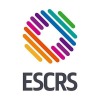For FAQs regarding Coronavirus please click here
Who gets long-sightedness?
Long-sightedness is a common eye problem affecting over 25% of both children and adults[footnote]Prevalence of refractive error in Europe: the European Eye Epidemiology (E3) Consortium[/footnote]. Older adults (50+) notice their long-sightedness more when they lose accommodation
YOU HAVE BLURRY VISION, ESPECIALLY FOR CLOSE OBJECTS
If you have long-sightedness, your glasses prescription will have a unit of sphere (often noted as S or SPH) that is typically expressed as a positive number (a “plus” sign, or +). This indicates the degree of long-sightedness you have, expressing how much you experience blurry and distorted vision. In general, the further away from zero the number on your prescription, the worse your eyesight and the more vision correction you need.
YOU MIGHT FEEL HEADACHES, EYESTRAIN, AND SQUINTING
Uncorrected, your long-sightedness can be bothersome. Fortunately, glasses and contact lenses can correct long-sightedness. Unfortunately, you may dislike the way your glasses look or feel, and you may be worried about the high risk of contact lens infection after prolonged use.
HOW GLASSES AND CONTACT LENSES CAN IMPACT YOUR DAILY LIFE
In glasses, rain can be a struggle. Your glasses may fog up, get loose and fall down your nose. Needing to constantly clean them is a regular hassle. Falling asleep in them can cause them to break. Not being able to wear sunglasses can be a real bother. When it comes to contact lenses, they can cause dryness, computer vision syndrome, serious eye infections, and grittiness and irritation if you wear them for too long.
GLASSES CHANGE THE WAY YOU LOOK
You might have heard people say you look better without glasses or even tell you that you should get contact lenses. You might feel they detract from or hide your facial features. They might make your eyes look unnaturally large.
IF GLASSES OR CONTACT LENSES ARE THE ENEMY
Help is at hand! With modern laser eye surgery and lens replacement, we’ve been able to treat all sorts of eye problems, including long-sightedness, for decades. Futhermore, we have excellent results proving its safety and effectiveness.
Affiliations and memberships
I am proud to be associated with these organisations as a member or consultant
Supplementary information about long-sightedness (hyperopia)
In my expert hands, you certainly don’t need to know all of the information I’ve included in the toggles below. If you’d like to know how it all works, however, open them and learn more.
Take the first step
Find out if your eyes are suitable for vision correction
Book a free screening now or get us to give you a call back to answer questions
Even more information about long-sightedness (hyperopia)
I frequently write articles and publish videos to answer people’s most common questions and keep them updated on the latest developments in vision correction. Find out more below…
How long does laser eye surgery last?
If you're thinking about correcting your vision, you may be wondering ''how long does laser eye surgery last?''. Learn more about what to expect, here...
SMILE v LASIK v PRK – What Are the Different Types ?
When comparing SMILE, LASIK, and PRK, it can be easy to get overwhelmed. Here are the key differences between these types of laser eye surgery.
Can I get laser eye surgery?
If you dislike your glasses and contact lenses, you might be wondering "can I get laser eye surgery?" To find out whether you may qualify for this life-changing procedure, read on.
A clear look into the types of laser eye surgery in London
All laser eye surgery has the same general idea - a surgeon uses a laser to reshape your cornea, improving your vision. There are multiple ways a surgeon can do this, though. You need to know if you’re getting the right type of surgery. Take a look at these top types of laser eye surgery in London.
Compare long-sightedness with other relevant eye conditions
Eye conditions are frequently misunderstood, so here’s a quick overview of the ones I most commonly treat
ASTIGMATISM
Astigmatism is an imperfection in the shape of your eye’s cornea or lens. Usually, the cornea and lens are round or spherical like a football. In eyes that have astigmatism, the cornea and or lens of the eye are oval in shape like an egg. As a result, light rays focus on a blurred oval shape on the retina rather than as a single sharp image. Learn more about astigmatism…
Treatments for astigmatism
SHORT-SIGHTEDNESS
Short-sightedness is also known as Myopia.
Short-sightedness (or myopia) is an eye condition where the focusing power of the eye is too strong. For that reason, if you’re short-sighted, you need to wear negative power lenses to reduce the focusing power of the eye. Doing so brings the image of the world into focus on our retina. Learn more about short-sightedness…
Treatments for short-sightedness
DRY EYE
The term “dry eye” covers many different eye conditions where an imbalance in the volume or quality of the tears results in inflammation and damage to the surface of the eye. Patients have varying degrees of dry eye symptoms from occasional discomfort and stinging to severe pain and inability to see. Learn more about dry eye…
PRESBYOPIA
Presbyopia is the eye condition which causes people aged 45 and older to need reading glasses. The ageing of the eye’s natural lens which stiffens and loses its ability to focus causes presbyopia.
Treatments for presbyopia
Presbyopia is the eye condition which causes people aged 45 and older to need reading glasses. The ageing of the eye’s natural lens which stiffens and loses its ability to focus causes presbyopia.
Treatments for presbyopia
CATARACT
Cataract is the term we use to describe the changes that occur when the lens of the eye loses its transparency and changes from appearing like a crystal clear window to appearing like a misted window like frosted glass. Learn more about cataract…
Treatments for cataract
- Standard Cataract Surgery
- Refractive Cataract Surgery
- Complex Cataract Surgery
KERATOCONUS
Keratoconus is a condition where the cornea, the front window of the eye, becomes thinner, loses its strength and begins to warp out of shape progressively. Learn more about keratoconus…
Treatments for keratoconus
- Cross-linking
- INTACS
- Corneal transplant
RECURRENT CORNEAL EROSION
Recurrent corneal erosion is a painful eye condition where there are episodes of severe pain on waking which resolve over a few days to a week only to reoccur again in the future. Learn more about recurrent corneal erosion…
Treatments for recurrent corneal erosion
- Laser Phototherapeutic Keratectomy (PTK)

About the author
Mr Alex J. Shortt | Consultant Ophthalmic Surgeon
MB BCh MSc PhD FRCOphth PGDipCatRef
I’m Alex Shortt, a highly trained academic researcher and Consultant Ophthalmic Surgeon based in London’s famous Harley Street medical district. I trained and worked as a consultant for 14 years at London’s Moorfields Eye Hospital. I specialise in advanced technologies for correcting vision, including cataract surgery, implantable contact lenses and laser vision correction.














